Padua and Venice
After much trepidation, filling out of numerous government forms, and tests, our Ancient Roman Republic group of travelers met in the far north Italian city of Padova in the province of Veneto (Patavium in Latin and Padua in English: I don’t know why so many of these names are slightly different in English. Padova is perfectly understandable, as well as Venetia, Roma, Firenze!)
Once we were in Italy, all the problems fell behind and we had an exceptionally lovely time with an exceptionally interesting and lively group of people! (Our guide in Padua commented on how long we stuck with her tour of the ancient history—she said most Americans lose interest after 2 hours!)
Padova claims to have been founded by the Trojan Antenor (of Aeneid fame) in 1183 B.C. and was the second richest city in the Roman Republic. Its University of Padua opened 1222 in a desire for more freedom of inquiry, and attracted great scientists from all over Europe because it didn’t exclude non-Catholics. Galileo Galilei, Nicolaus Copernicus, Gabriele Falloppio, William Harvey were among the many notable scientists who attended or taught there. And it graduated the first woman Ph.D.– in Mathematics and Philosophy–1678, Elena Lucrezia Cornaro Piscopia.
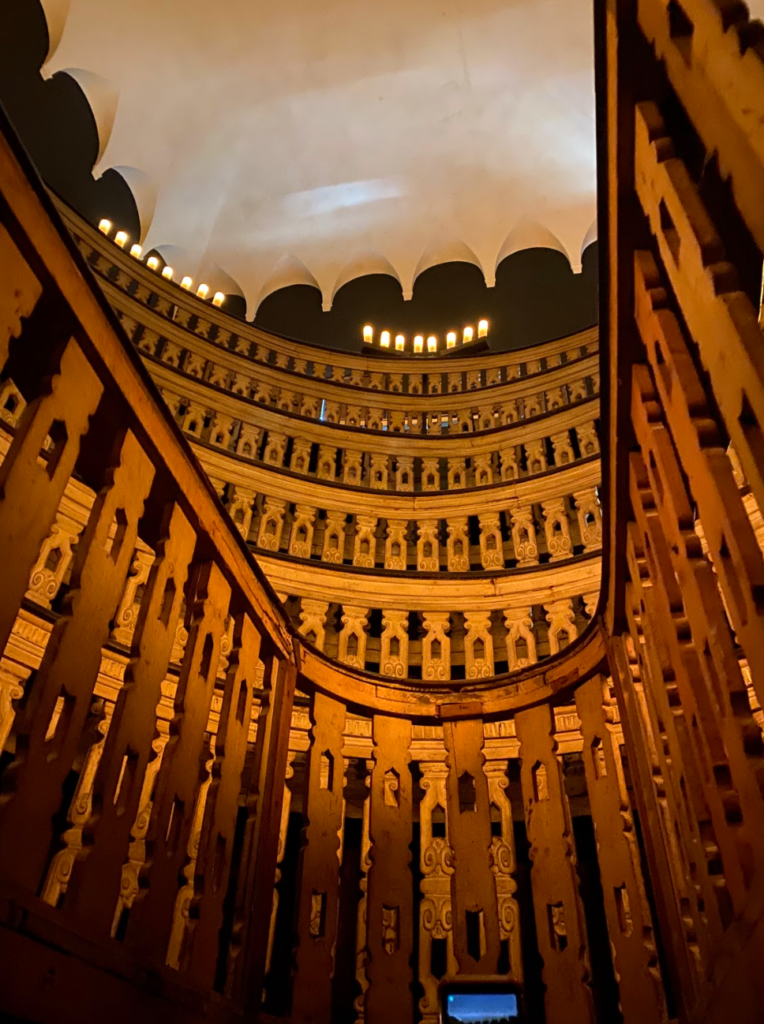
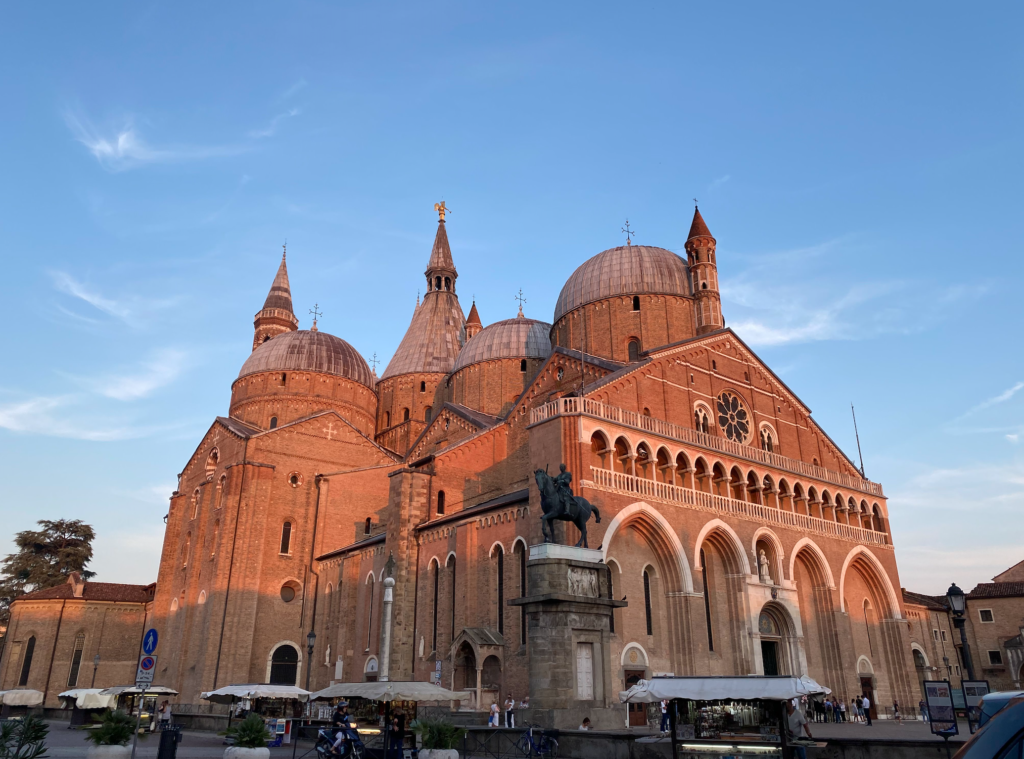
We read a selection from Padua’s son, the Roman historian Livy, on the founding history of Rome by Romulus and Remus and Aeneas. There were many questions about this account: how accurate and believable was it? What did it tell us about how Rome organized itself? Did it illustrate the ways in which Rome was exceptional and in what ways; how were these related to its growth as a republic? How much was Livy’s account slanted to please his friend and emperor, Augustus?
Eminently walkable, we resided in the Hotel Donatello across from their grand Basilica of Saint Anthony. The basilica’s architecture and artwork were almost overwhelming; the amount of skill and work that had to go into building it….during a time (built 1232-1310) when people were subsisting on little.
While in Padua, we took a day to indulge in the rich landscape, history, art and magnificent architecture, crafts of mask-making, jewelry, paper, food, and fabrics of Venice.
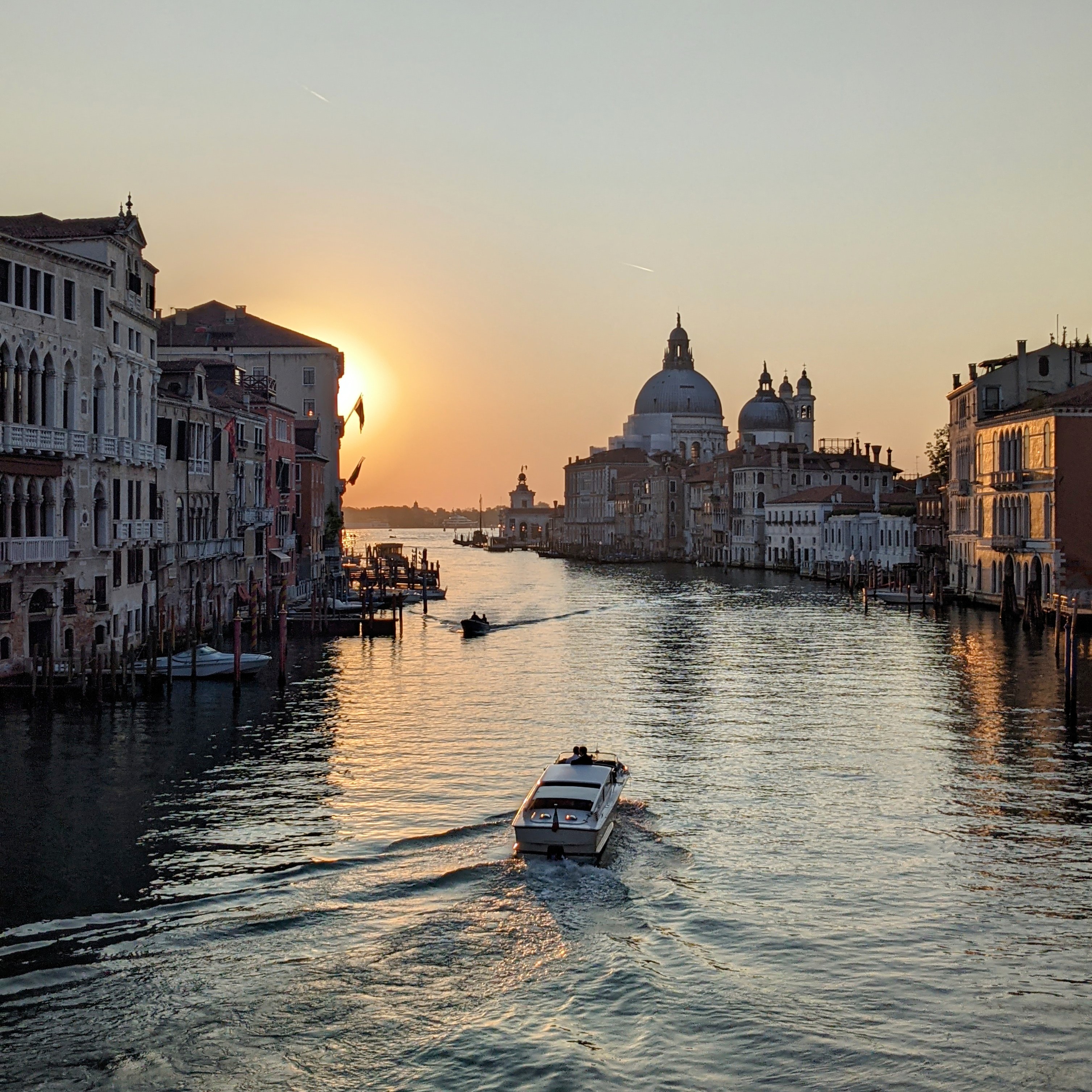
Arquà, Montagnana, and Verona
From Padua we took a day trip to see distinguished small villages in the nearby, picturesque Euganean Hills. In Arquà Petraca, we visited the villa of the poet Petrarch, in which he spent his last years, and in Montagnana, we saw the best preserved city walls in Europe. On top of beauty and history, in my opinion, we had the best meal in all Italy at a small restaurant in Arquà, Ser Petracco Enoristorante.
Leaving Padova on our way to the Cis-Alpine Lake Garda, we stop in fabled Verona, another exquisite town of Shakespearean fame. Visiting Juliet’s house, our traveler Nora was asked to take a picture of a couple on Juliet’s balcony, where the man proposed to the woman!
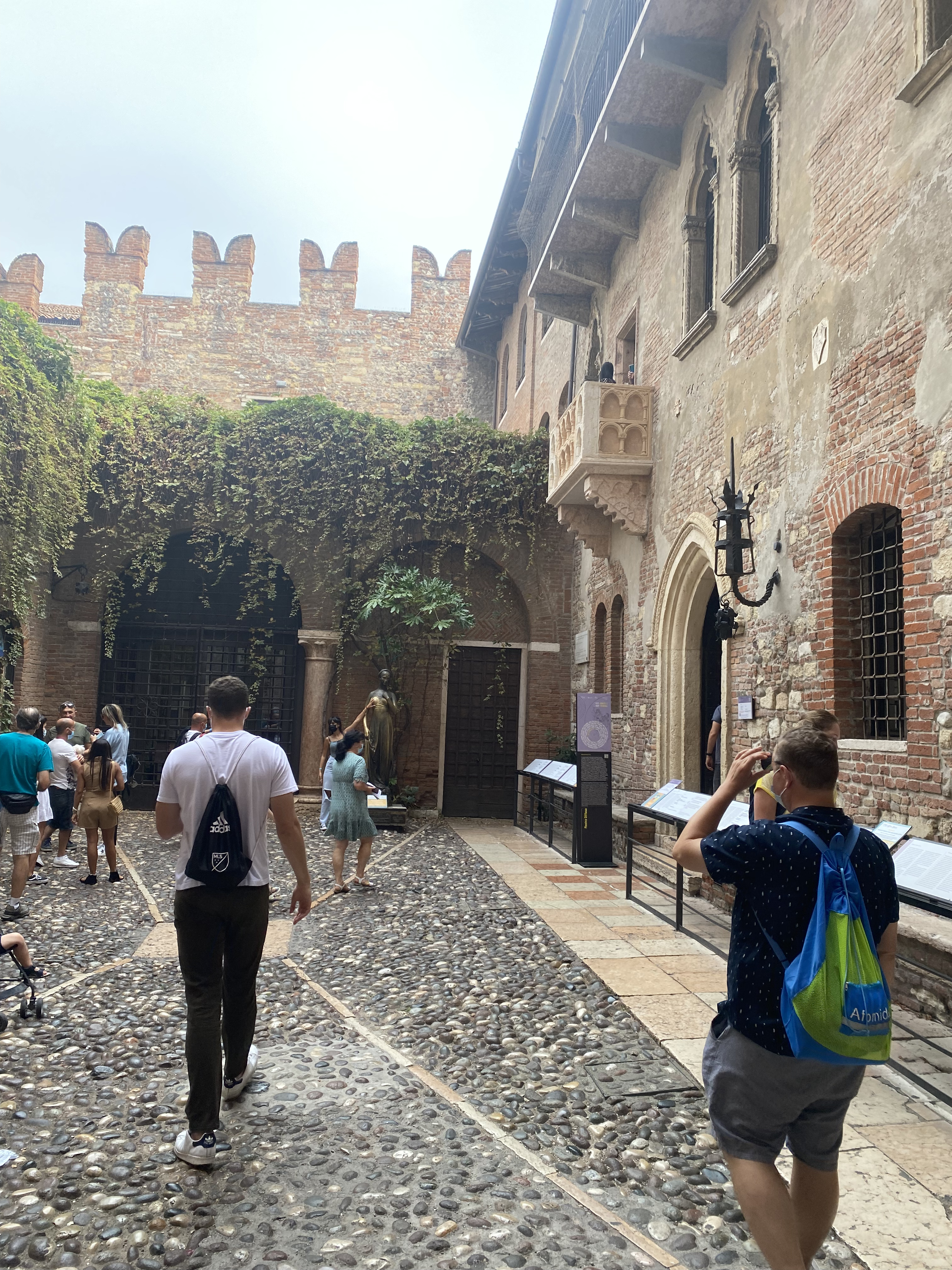
Juliet’s tomb and the city tower were also remarkable sites, as well as the gelato shop.
Bardolino and the Villa di Catullo
After our day stop in Verona, we went on to the delightful resort town of Bardolino on Lake Garda. A prehistoric fishing village, it now offers swimming, biking, sailing, hiking, shopping, and loads of eating, along with stunning views of the huge lake and the foot of the Alps. The place seemed to be filled with Germans and Italians but no Americans while we were there—in fact I surmised they rarely saw Americans because the waiters asked us if we were English! (Americans are more familiar with Lake Como.)
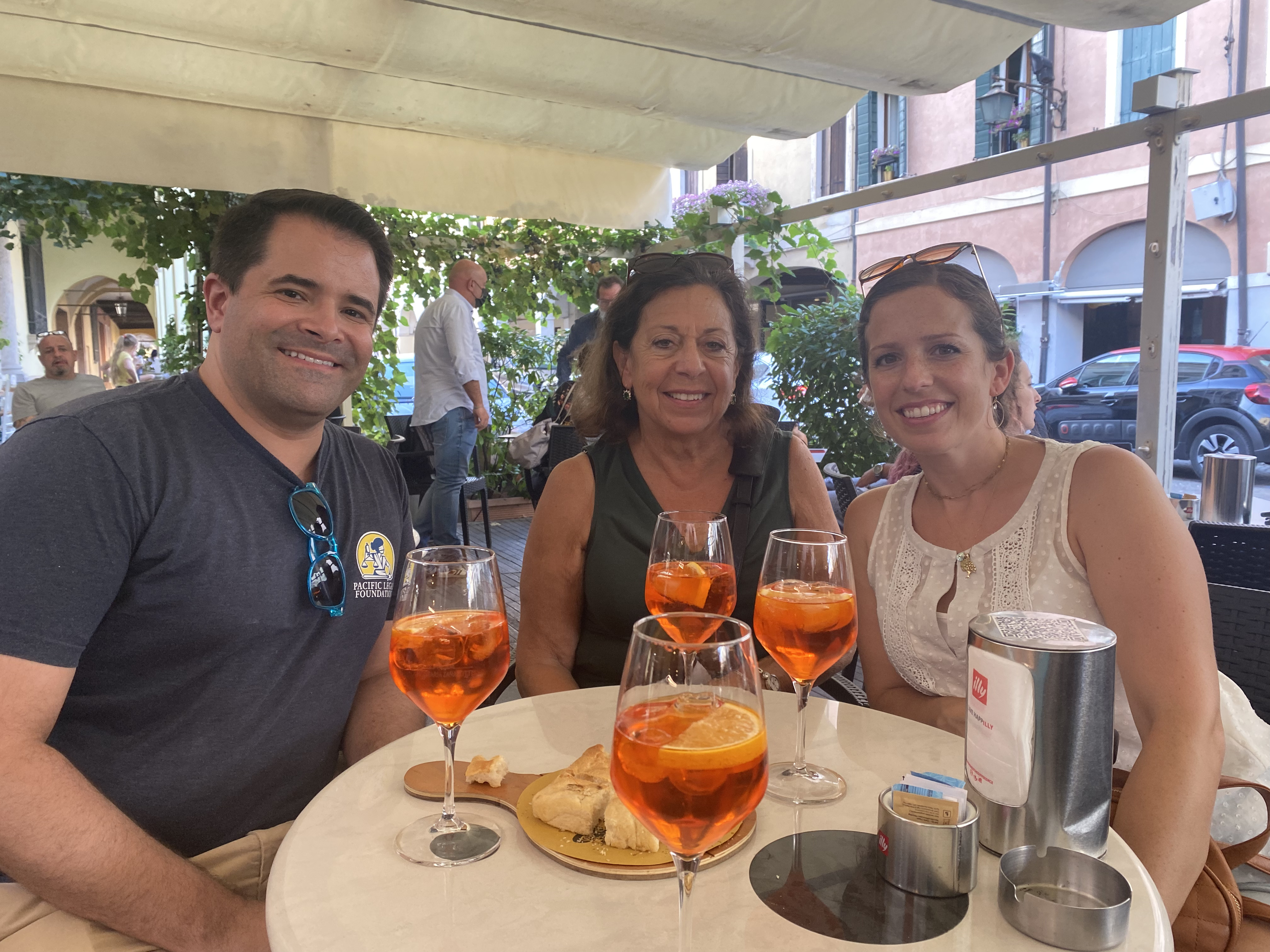
While there, we toured an immense Roman villa on the tip of a peninsula which sticks into the southern end of the lake. Called the Grottoes di Catullo, it is named after the Roman poet Catullus, whose work we discussed while in Bardolino. Catullus had a sharp but often loving tongue, ranged from hilarious to despondent and was a master of conveying his feelings in the most beautiful, colorful, and concise language—in 50 B.C. Our readers were once again struck by how much humanity has not changed since that time (as when we read Sappho in Greece—from 600 B.C.). A big favorite of our group was his searingly tender poem to his dead brother:
“Traveling through many nations and through many seas
I have come, brother, for these poor funeral rites,
That I might render you the last dues of the dead
And vainly comfort your dumb ashes,
Because Fortune has robbed me of your self, alas,
Poor bother, unfairly taken from me.
But now, meanwhile, accept these gifts which by old custom
Of the ancestors are offered in sad duty
At funeral rites, gifts drenched in a brother’s tears,
And forever, brother, greetings and farewell.”
Exquisitely poignant.
The Villa is named after him because he wrote a poem extolling the beauties of its location. The Villa was clearly an enormous party house and grounds; what’s remarkable is that it was built for many, many guests, even though it would have taken days and days to get there from Rome (it’s five hours by car).
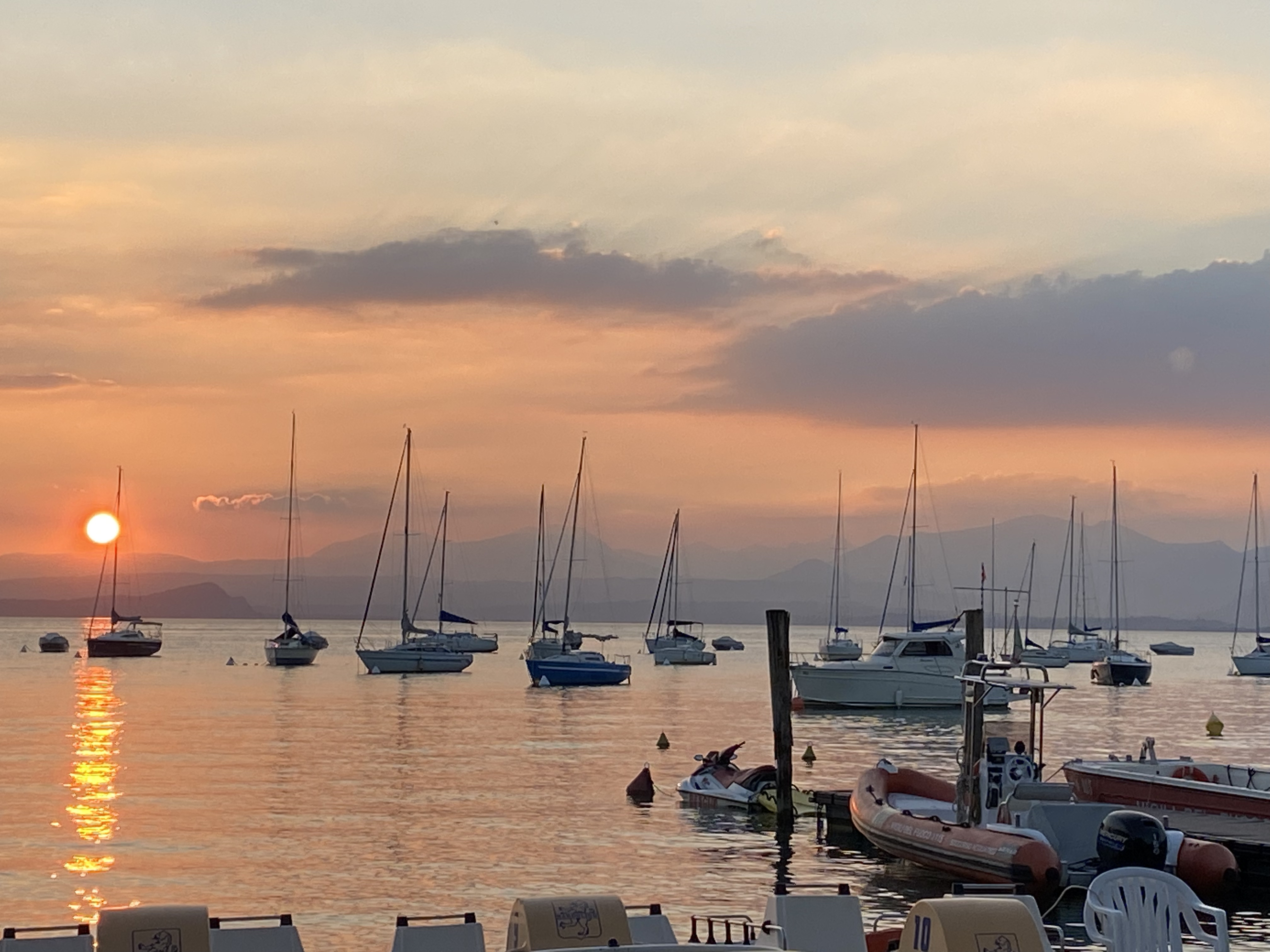
Rome
We left Bardolino and headed finally to Rome itself, down through Lombardy and then Tuscany. On the way, we stopped for lunch and a wine and olive oil tasting at a superb vineyard in San Gimignano, Tenuta Torciano. Not only were we blessed with a gourmet lunch and wine, since it was harvest time we were able to taste the tiny, flavor-filled wine grapes, white and red.
After spending the afternoon there, we finished our trip to Rome itself by evening. Just the drive into Rome is impressive, the city and its surrounds are so enormous. The thing that always strikes me hard when I visit Rome is the monumental architecture—everywhere! And much of it has been there for thousands of years; hence the name “Eternal City.”
I have been to Rome several times before, always bowled over by the tremendous buildings constructed with only simple machines. No matter how many slaves they had, the architectural and engineering genius is mind-boggling.
The Appian Way, the Aqueducts, the Colosseum, the Circus Maximus where even naval battles were staged are monuments to this civilization’s genius for organization and engineering. But, this time, what stunned me silly was the Baths of Caracalla. This enormous building, 100 feet high and loaded with artwork and mosaics, housed a hot, a warm, and a cool bath, a swimming pool and two gyms for 18-22,000 people a day to use. The engineering, the architecture, the organization—how did they build this with simple machines and slaves? How did they keep it clean, keep the plumbing in order? Apparently it was a great meeting place to transact business!
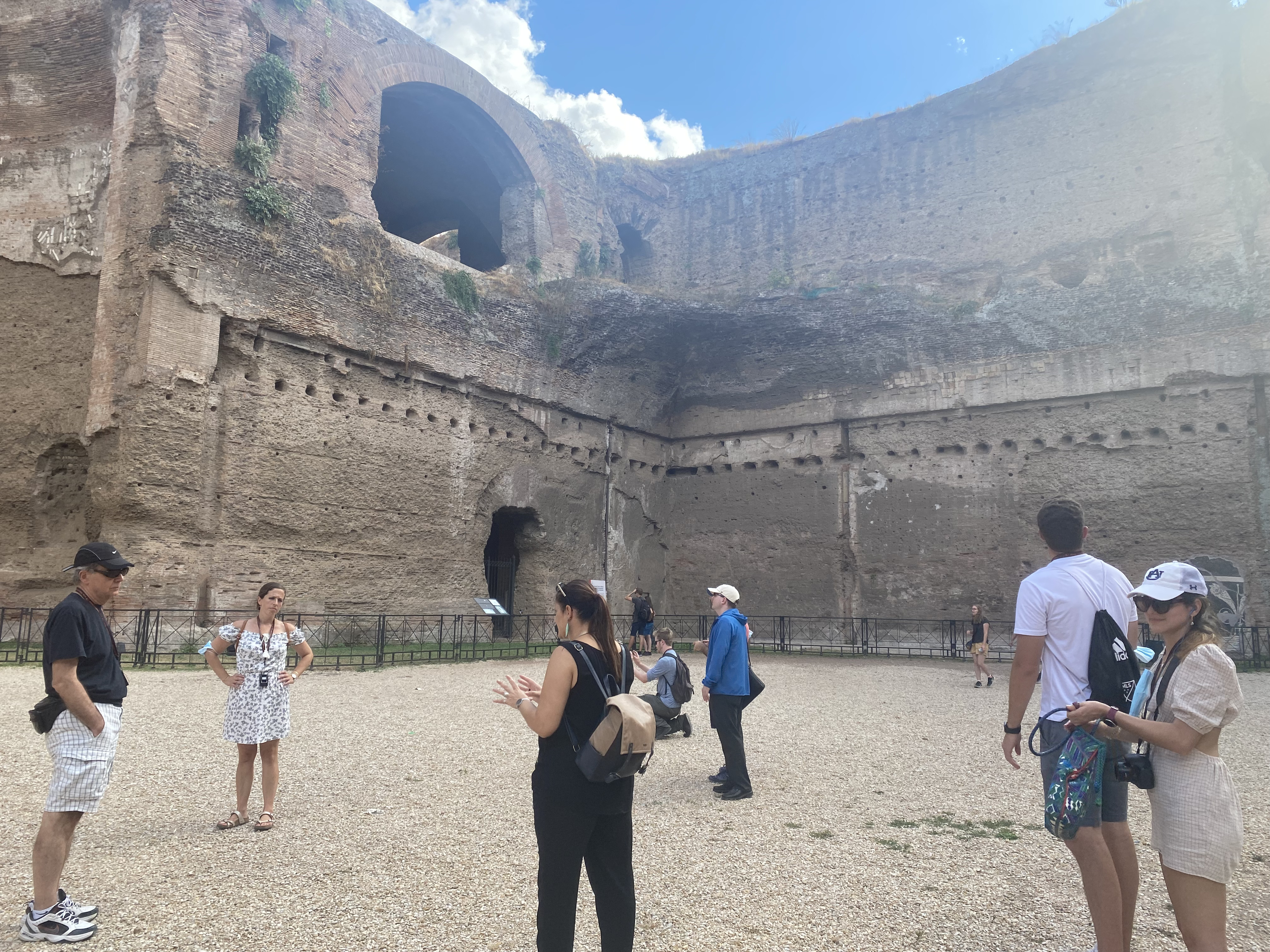
Through our tours and our readings, we learned about what made the Roman Republic so successful, such as its incipient recognition of individual rights, its strong law tradition, and respect for property. This was evident when we discussed Cicero’s “First Oration Against Verres,” steeped in Republican values during a time when the Republic was on the brink of breaking apart. We discovered why Cicero has had such a tremendous influence on oratory and the history of legal strategies and speech.
We availed ourselves of the Vatican Museums’ artistic riches as well as the Villa Borghese. And I had a chance to go to the Palazzo Massimo, with its stunning collection of portraiture sculpture and two Greek bronzes from about 200 B.C. “The Boxer at Rest” is the most impressive, with its heroic realism and virtuoso sculpting skill: copper used for blood and wounds, his powerful body and head twisted. Amazingly, hardly anyone was in the museum so I had the room to myself for 10 minutes!
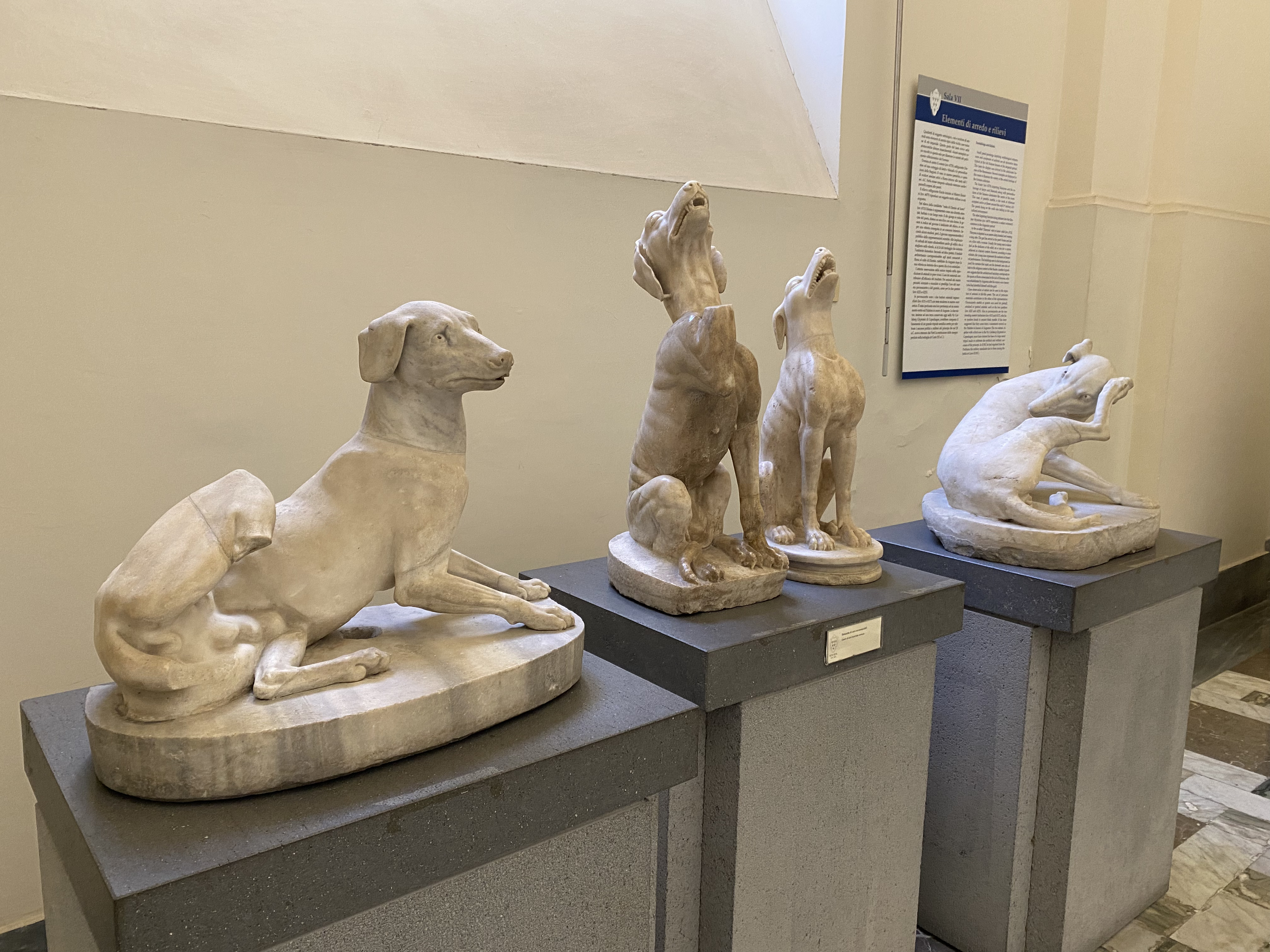
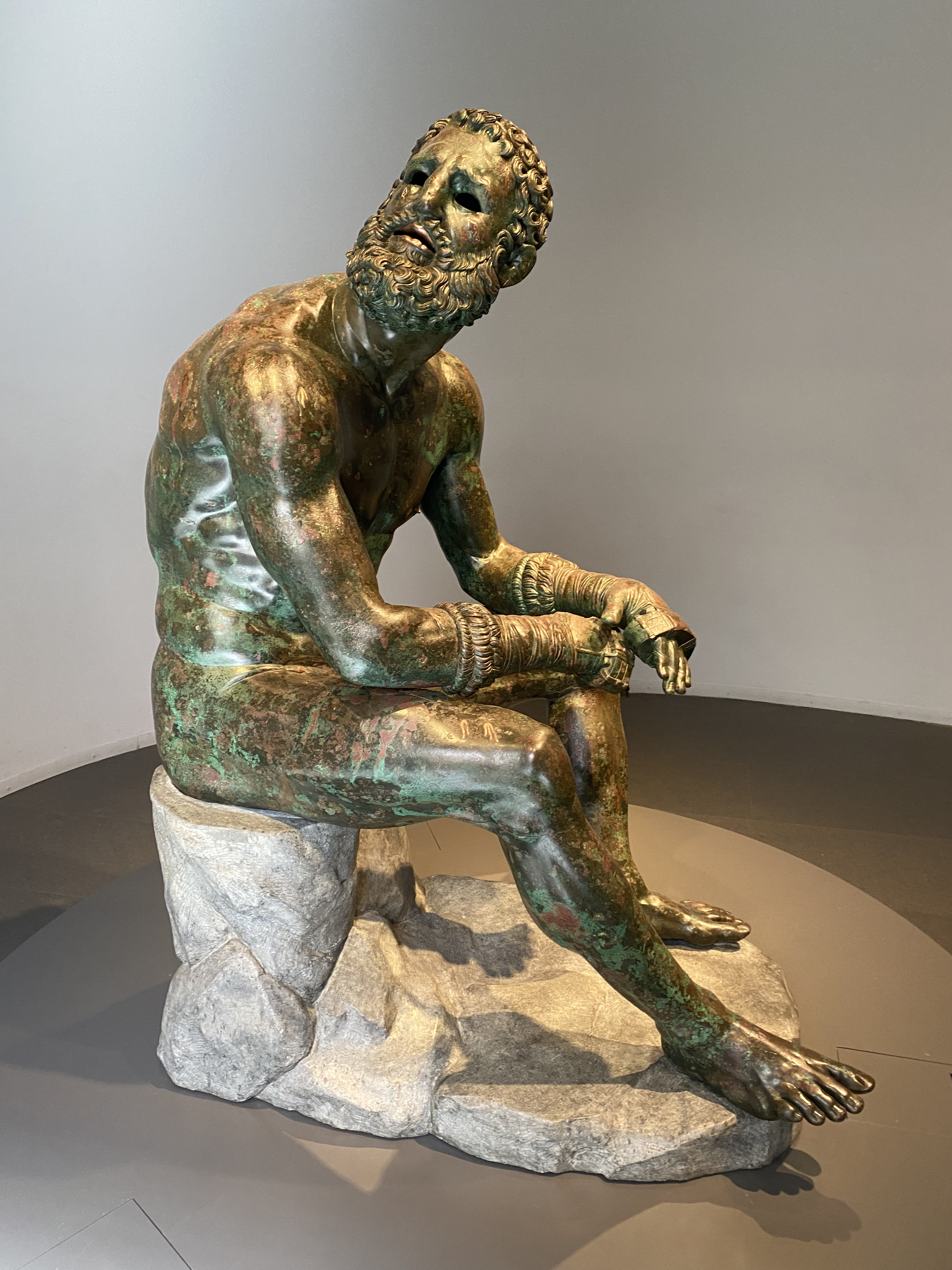
Eating and shopping in Rome were great, as you can imagine. In our discussion of Virgil’s Aenied, we ranged from trying to understand the geography laid out in the story to examining the poetic style of Latin (dactylic hexameter), to appreciating the tender poetry about the death of Aneas’ father.
Naples and the Amalfi Coast
After 3 days soaking ourselves in the glory that was Rome, we headed south to Napoli to avail ourselves of the riches of Pompeii, Herculaneum, and the Farneses in the massive Museo Archeologico Nazionale di Napoli. All the most stunning artwork from these places is in this museum, such as the Battle of Alexander mosaic (4.5 million pieces of glass) and the floor of sea creatures pictured here, and the Farnese Hercules which had been in the Caracalla Baths. Some time I will want to explore Napoli itself, an ancient city founded by Greeks in 800 B.C. A complete Egyptian boat with the skeletons of crocodiles and giraffes was found digging up their subway.
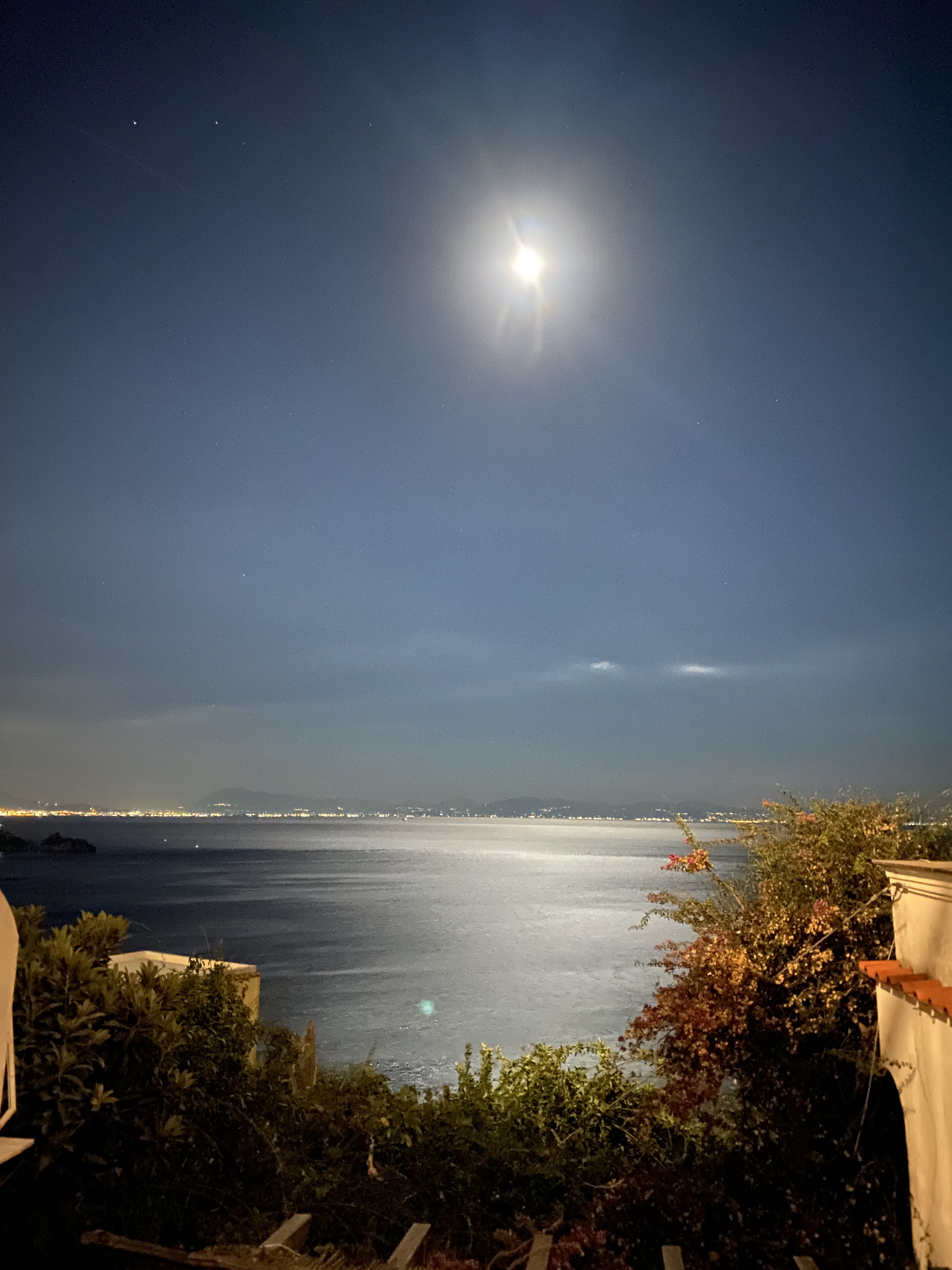
We only stayed in Napoli for the afternoon, wending our way down the coast road to our final destination: Praiano, on the Amalfi Coast. This stunning vacation area was discovered by Americans when the Navy bombed the Germans up in the mountains during World War II. Coming ashore at the village of Positano, the sailors were delighted by its natural beauty and word got out when they were back in the States.
Praiano is a small village situated right on the water, conveniently located between the bigger towns of Amalfi and Positano. Our travelers enjoyed fabulous shopping in Positano a delightful tour of a lemon grove in Amalfi, were there’s also an historic paper plant manufacturing beautiful papers.
Praiano offered us soothing relaxation in its delightful waters, dinners with award-winning vistas, boating, hiking on the Path of the Gods to unbelievable views of the region, and luscious food. A fitting, recharging end to our two weeks of exploration.
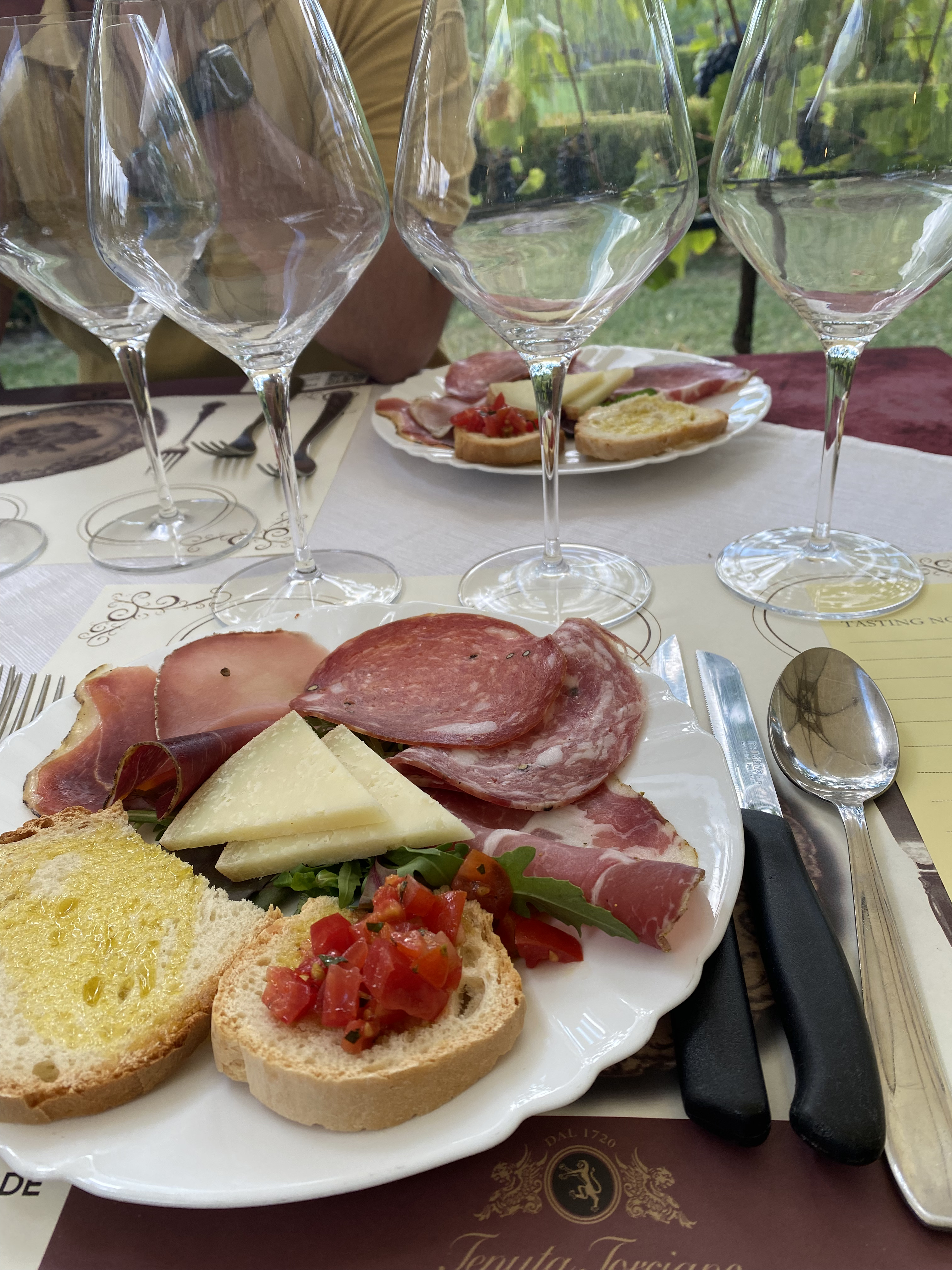
If you’ve donated to The Great Connections, thanks for enabling our young travelers to come on this knowledge-rich and life-changing trip.
Many thanks to our superb travel agent from our Greece trip, Maria Loumou of All About Travel. She made everything easy.
If you’re interested in next year’s trip, please submit an interest form here.




One Response
What an exquisite trip that must have been, in every way!